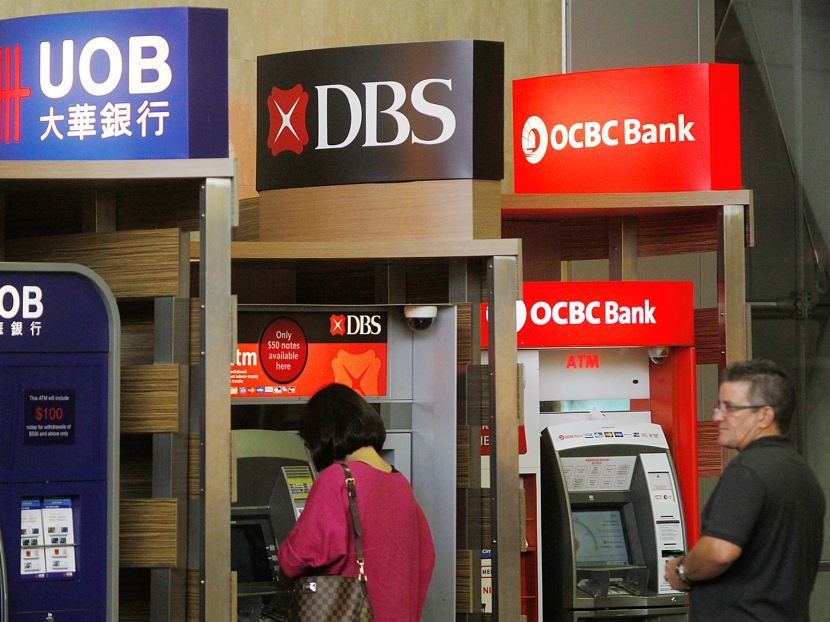S’pore’s big 3 banks among world’s 10 strongest
SINGAPORE — The Republic’s banks remain among the strongest in the world, with all three making it into the top 10 in the latest annual Bloomberg Markets’ ranking, underlining the hefty capital buffers and sound risk management of the lenders.
SINGAPORE — The Republic’s banks remain among the strongest in the world, with all three making it into the top 10 in the latest annual Bloomberg Markets’ ranking, underlining the hefty capital buffers and sound risk management of the lenders.
Oversea-Chinese Banking Corp (OCBC) has been ranked third, behind Hong Kong’s Hang Seng Bank and Japan’s Norinchukin Bank in Bloomberg’s list of the world’s strongest banks released today (July 30). That is a notch higher than last year, when OCBC slipped to fourth from second in 2013, after having topped the inaugural list in 2011 and again in 2012. Meanwhile, DBS has slipped to ninth from seventh last year, and United Overseas Bank (UOB) clawed back to 10th from the 13th position.
“We continue to actively manage our strong capital and liquidity positions and maintain healthy asset quality as we execute a prudent strategy of sustainable growth in our key markets. As a financial institution, these attributes are what matters most to our customers, investors and regulators,” OCBC chief executive Samuel Tsien said, emphasising that the bank has maintained a top five position among the world’s strongest banks for five years running.
Ms Karen Ngui, head of group strategic marketing and communications at DBS, said: “Over the years, Singapore has established itself as a leading financial centre, and we are pleased that the Singapore banks continue to be seen as not just leaders, but trusted partners on the world stage. Given the present macro uncertainty and market volatility, at DBS, we will keep a watchful eye on risks as we focus on embracing the digital world and supporting our clients here and all across the region.”
The Tier 1 capital ratio at OCBC and the other two Singapore banks exceeded the Basel III guideline at the end of last year, the Bloomberg report noted.
Asian banks continued to dominate the ranking, with seven of the top 10 from the region. Like Hang Seng and Norinchukin, Singapore’s strongest banks have been targeting the markets they know well, helping them curb bad debts and build a strong capital base, Mr Jean-Charles Sambor, director of the Asia-Pacific at the Institute of International Finance, said in the Bloomberg report.
The International Monetary Fund expects gross domestic product across Asia to grow to an average of 5.6 per cent this year. And Asia’s rich are getting richer: The 4.69 million individuals in the Asia-Pacific area with at least US$1 million (S$1.37 million) in assets boosted their combined wealth by 11 per cent last year to a total of US$15.8 trillion, the fastest pace in the world, the Bloomberg report noted.
In all, Bloomberg ranked 114 banks, including 13 private banks, around the world with at least US$100 billion in assets. The banks were evaluated in five categories. The ratio of a bank’s Tier 1 capital to its risk-weighted assets accounted for 40 per cent of each bank’s overall score. The ratio of non-performing assets to total assets got a weighting of 20 per cent, as did the ratio of reserves for loan losses to non-performing assets. The ratio of deposits to funding accounted for 15 per cent of the score. And the efficiency ratio, which compares costs with revenues, received a 5 per cent weighting.
Banks were ranked on each criterion, and the ranking positions were weighted and combined to determine the banks’ overall scores, and lenders that reported a loss in net income were excluded, Bloomberg said.







